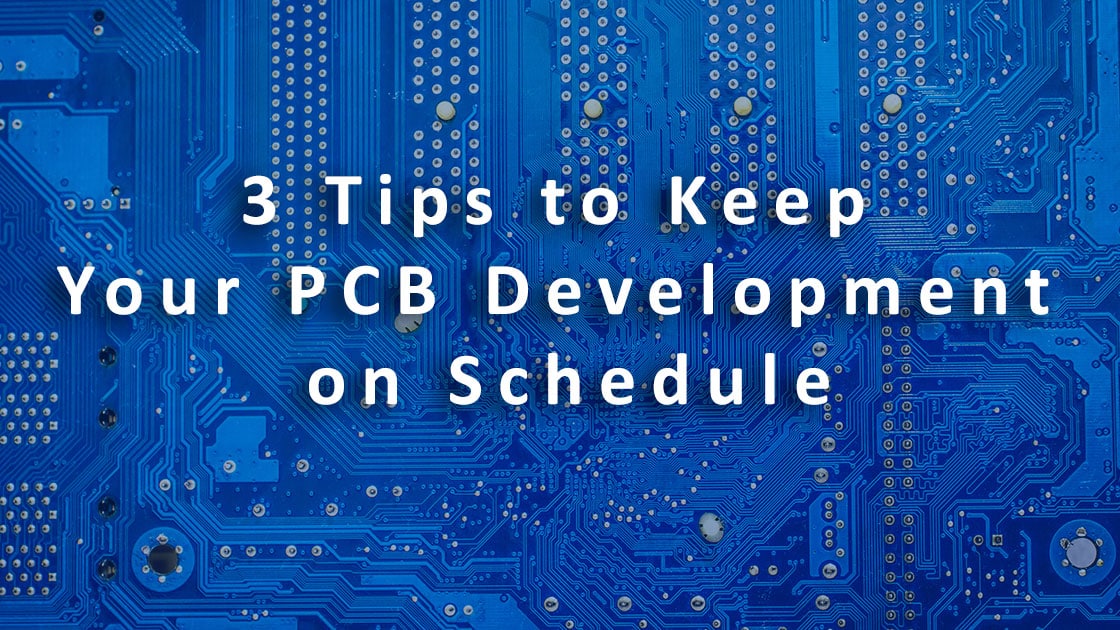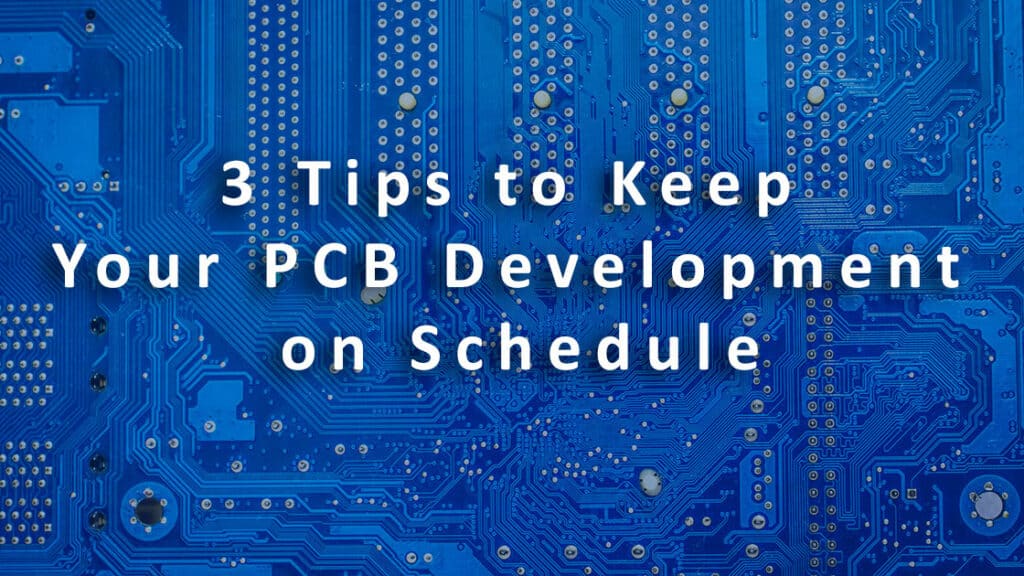3 Tips to Keep Your PCB Development on Schedule
“In order to improve your game, you must study the endgame before everything else. For whereas the endings can be studied and mastered by themselves, the middle game and opening must be studied in relation to the end game.”
—Jose Raul Capablanca, chess master
There has always been pressure on design teams to deliver on schedule. Nothing is more frustrating than pushing your team to release the design on schedule and then to find out that your first prototype build will be delayed due to several common, avoidable errors.
Here are some tips to help manage risk and to avoid unnecessary delays:
TIP #1 – Select a Supplier Early
Engage your potential suppliers early before your design package is ready for a quote. Ask them explicitly what would help them deliver your PCBA on time. By interacting with them early, you’ll get a feel for the level of support you’ll get in the future.
Setup payment in advance
If the supplier offers credit terms, fill out the credit application in advance. Once you have approved credit with the supplier, it will provide the flexibility to make changes quickly without having to re-authorize subsequent credit card charges, provide additional cash deposits, or send multiple wire transfers. And, of course, make sure you pay your invoices on time to prevent delays on subsequent orders that are held up for delinquent payments.
Provide a preferred shipping carrier
If possible, set up your preferred carrier in the supplier’s system. Then there will be no delays waiting for shipping instructions. I know that this seems obvious, but double check that the billing and shipping addresses are entered correctly as well.
TIP #2 – Plan for Parts Management
Long Part Lead Times
During the design phase, it is important to browse online distributors and take a cursory look at the current stock and standard lead times, especially for single-sourced or unique parts. Begin securing parts as soon as the architecture is stable. Don’t wait until the BOM is finalized before ordering parts. Otherwise you may be in for an unpleasant surprise when parts that were available weeks ago will not be back in stock for several months.
Parts Procurement
Clearly, you will want to avoid paying for additional markup on parts if the supplier orders them, right? However, if you decide to manage the parts yourself, realize that you will be paying for shipping twice: once from the distributor and once to your supplier which may actually cost you more in shipping charges for low cost parts. Also, you’ll assume the handling liability if your supplier discovers problems during the incoming inspection and you will be responsible for handling any warranty claims with component vendors. However, most suppliers order parts daily from distributors so they are able to amortize shipping costs among multiple orders and they likely get better pricing than you can due to their order volume. IMHO, the best approach is to have your supplier secure parts so that the liability rests with them.
Permit substitution for common components
Large suppliers have an existing inventory of common parts, especially passives. If you permit them to substitute for common parts you will save additional costs and reduce the risk that your specified parts will delay your build.
Quote PCB fabrication early
Once the layout is mostly complete, prepare a design package for quoting purposes. This enables the PCB supplier to provide preliminary feedback on your the design. This may include highlighting missing information or identifying errors that would hold prevent the supplier from fabricating the PCB. The longer the turnaround time, the less expensive the PCB fabrication should be. If you can plan for a four-week turn PCB fab, you will get the best pricing possible. Also, components can be ordered concurrently so that all the material will arrive at the same time.
TIP #3 – Plan for Test
Except for the first pass PCBs, you will likely want some level of test for subsequent builds to ensure basic quality.
Provide a Basic Test Procedure
Yes, it will cost extra. BUT, how disappointing will it be when you discover that 6 out of 10 boards don’t work! Either you’ll have to debug them yourself or send them back for warranty. Most warranties are only going to cover workmanship defects anyways. However, if you provide a test, you provide the supplier an opportunity to detect defects and possibly rework the PCBs to correct the defects which will yield more working boards delivered to you.
Test Software
If your PCB design has programmable parts, create a basic test firmware image that can be programmed into the unit. The test software should provide a simple indication to the test technician that confirms that the device is operating properly.
Test Equipment
If your device requires specialized test equipment, check if your supplier can rent it for your project. You should only invest in more advanced test strategies such as flying probe, ICT/MDA, and JTAG boundary scan once your design is finalized. Otherwise, you’ll end up paying NREs multiple times which may hundreds or thousands of dollars.
Summary
Remember, that the first build of your design is just the initial step toward the goal of producing a cost-effective, reliable, and quality product.
Don’t be short-sighted and plan ahead for the end game.



